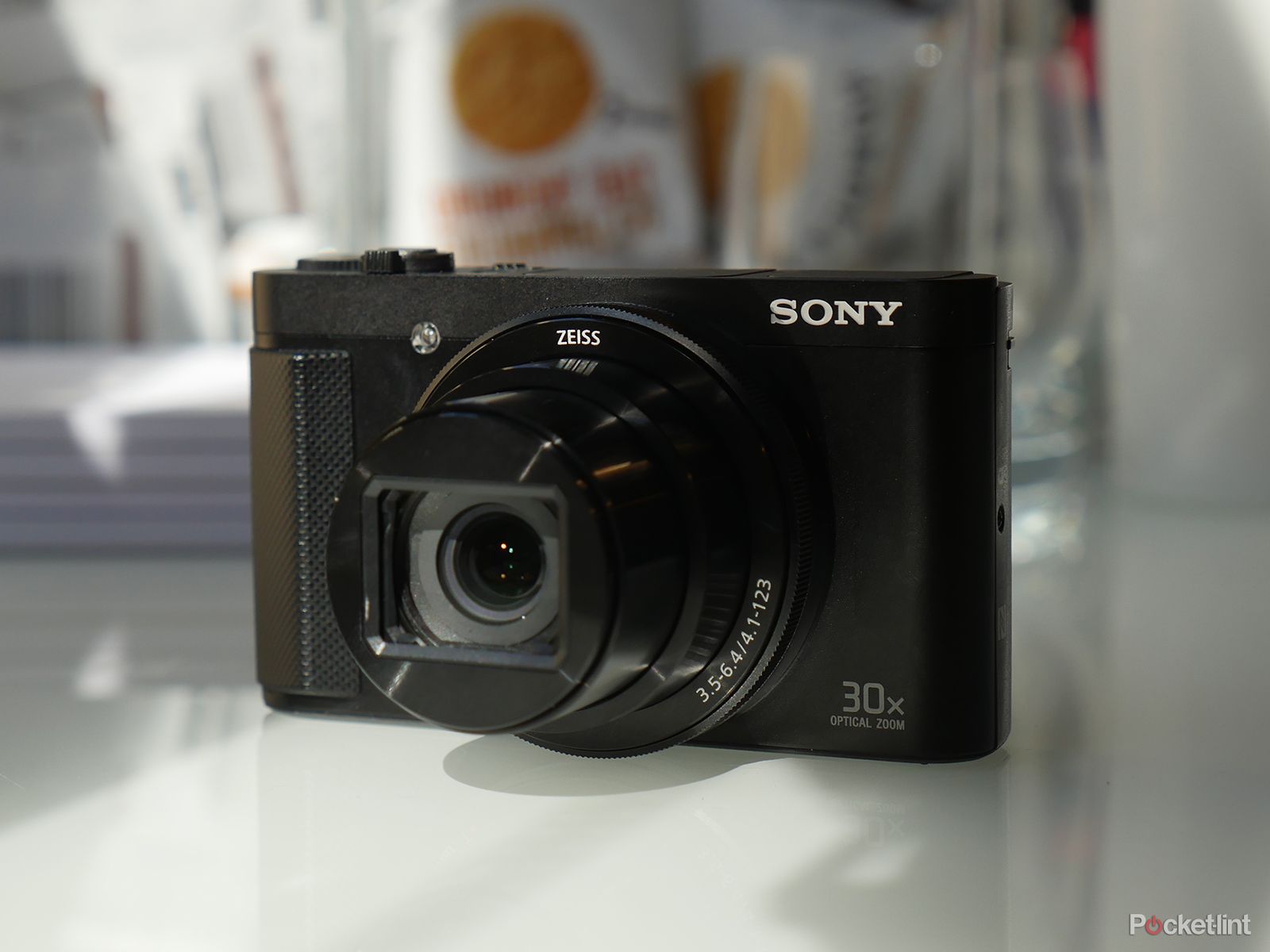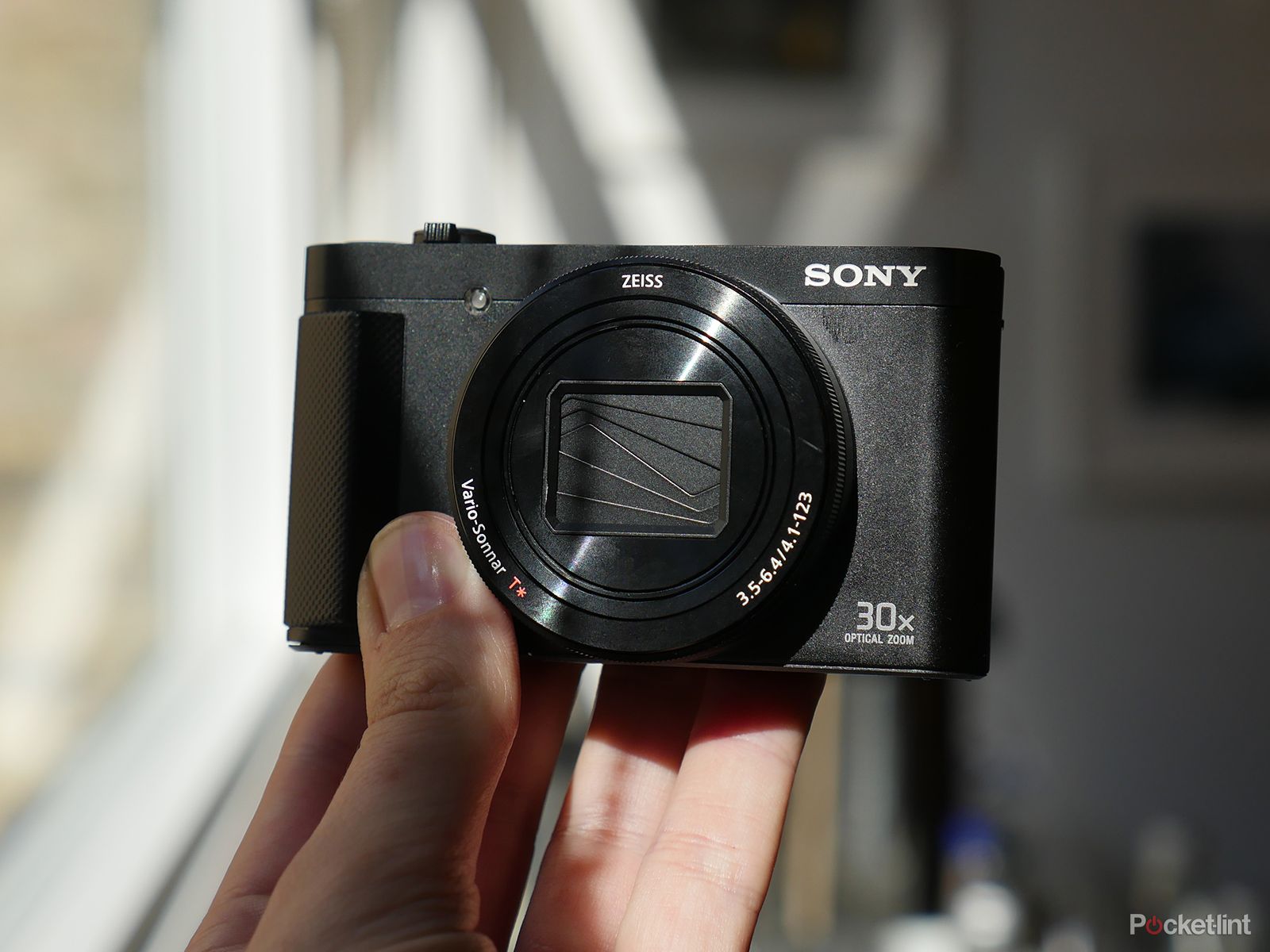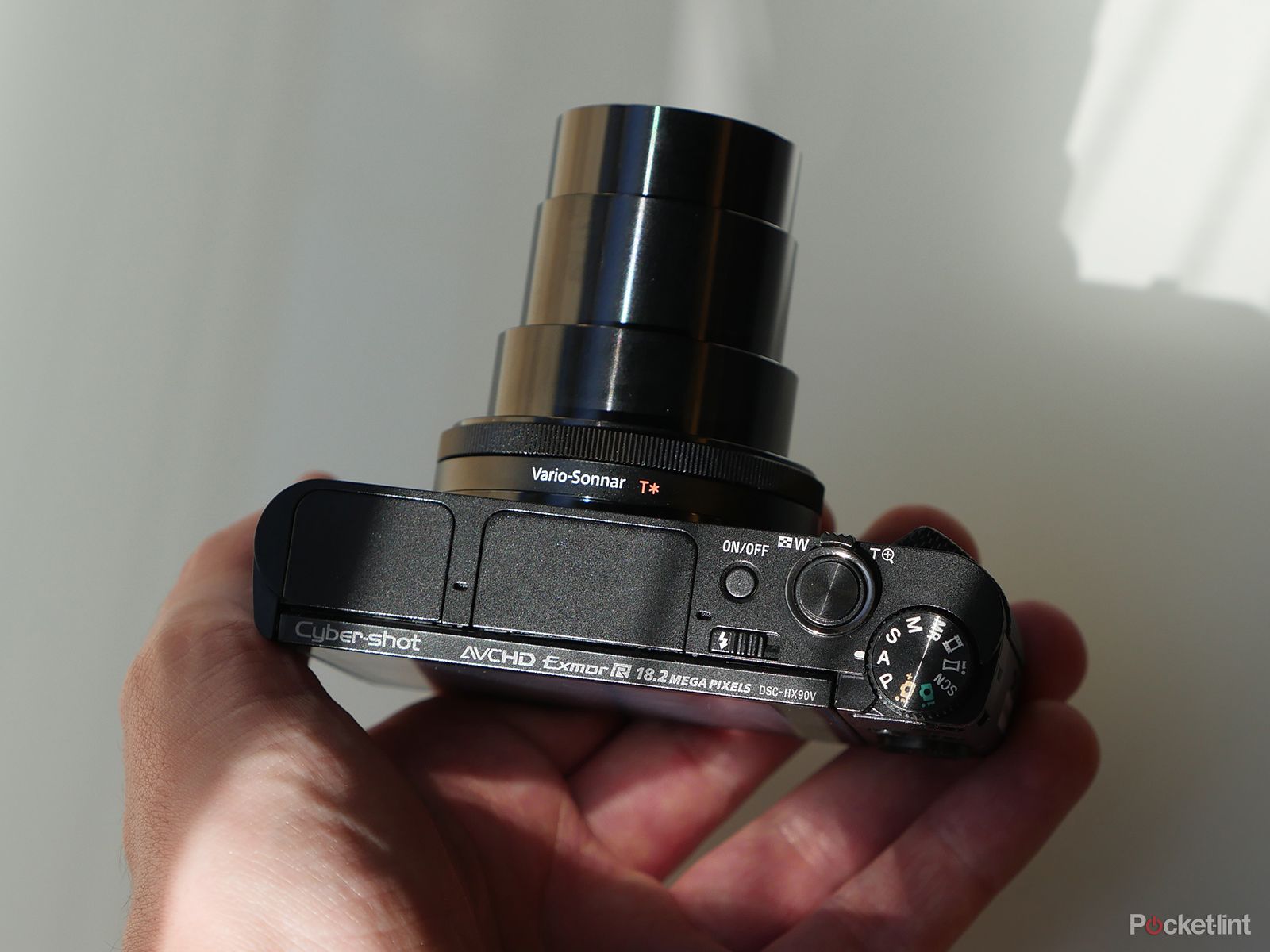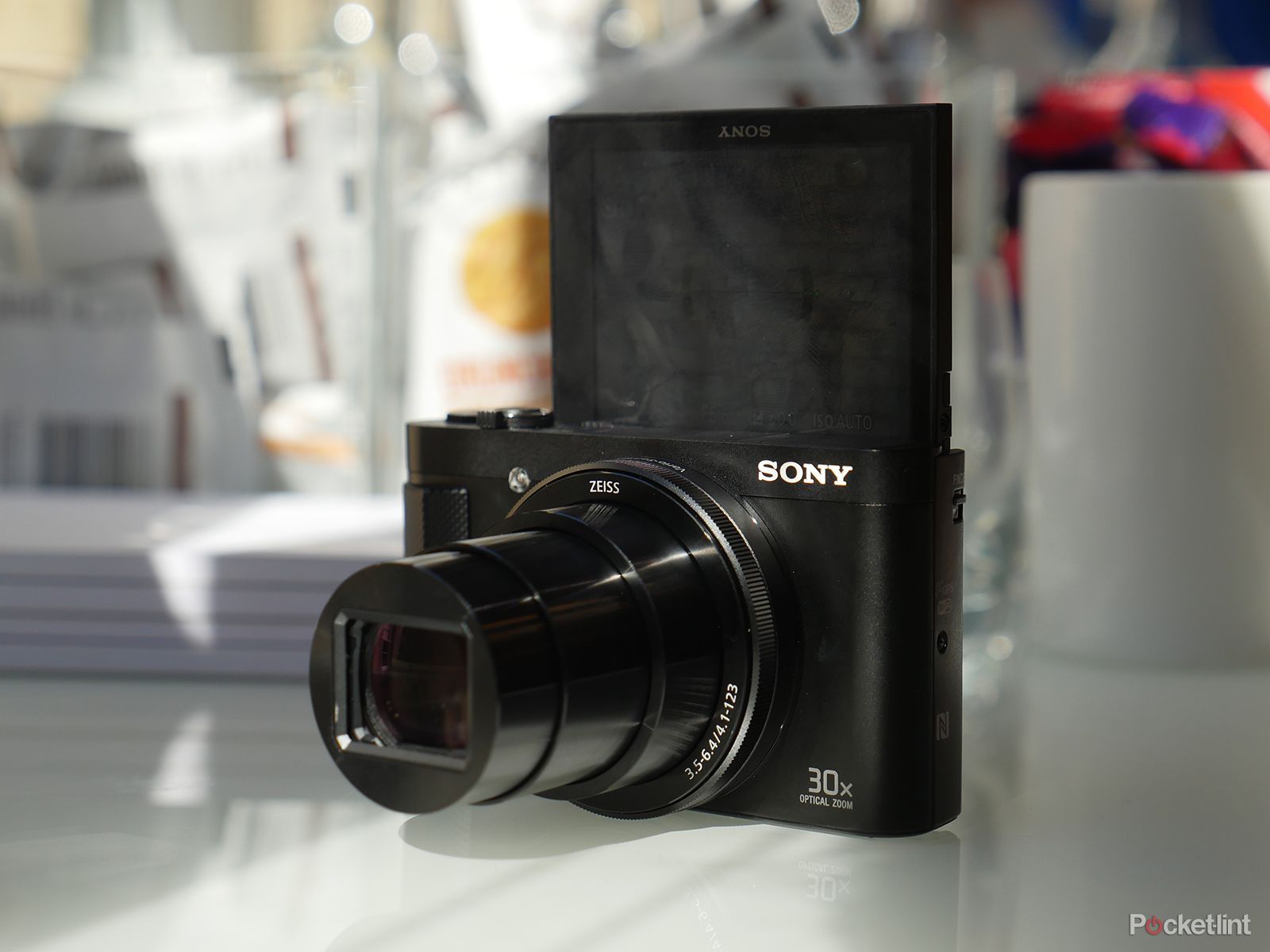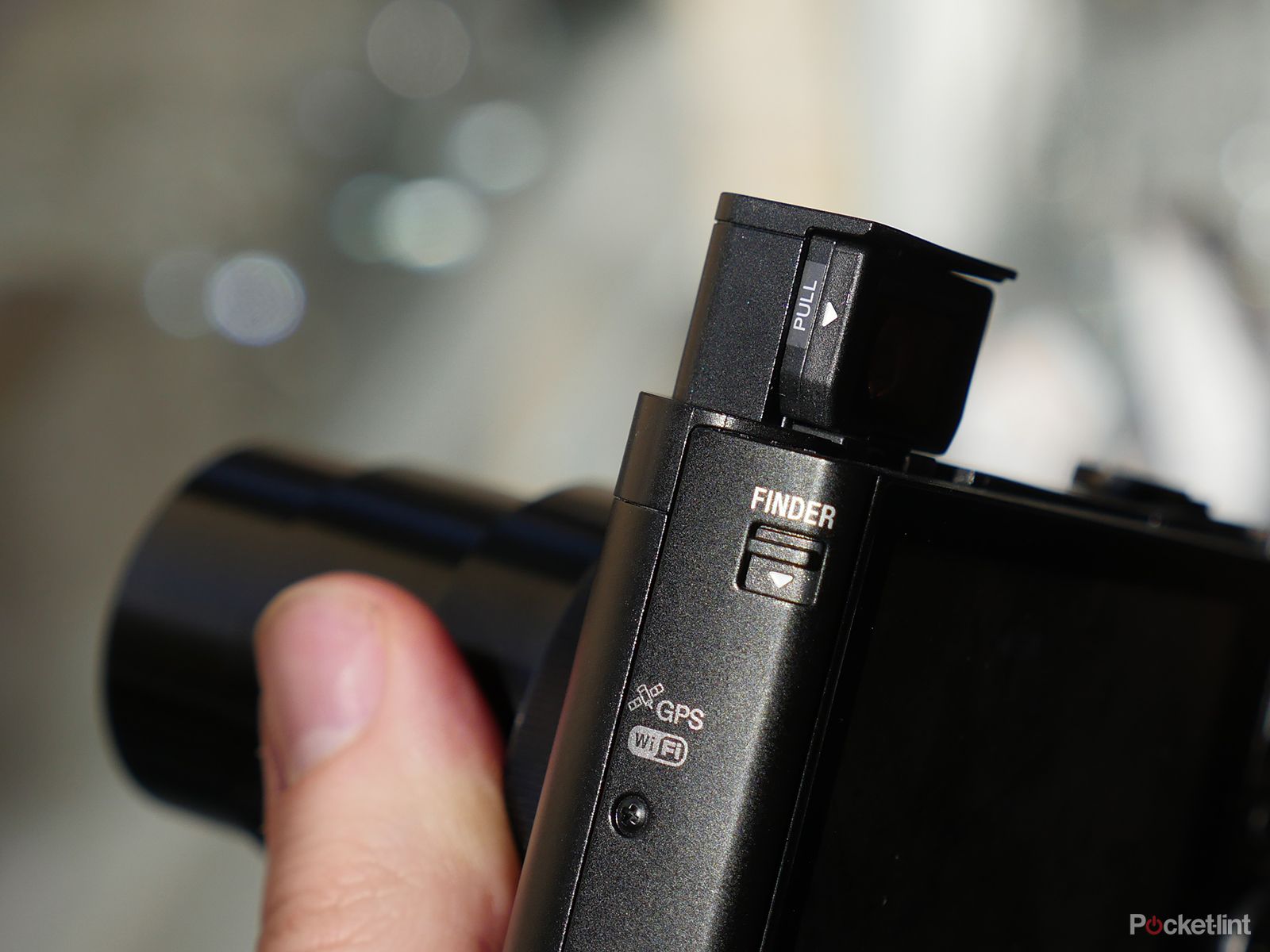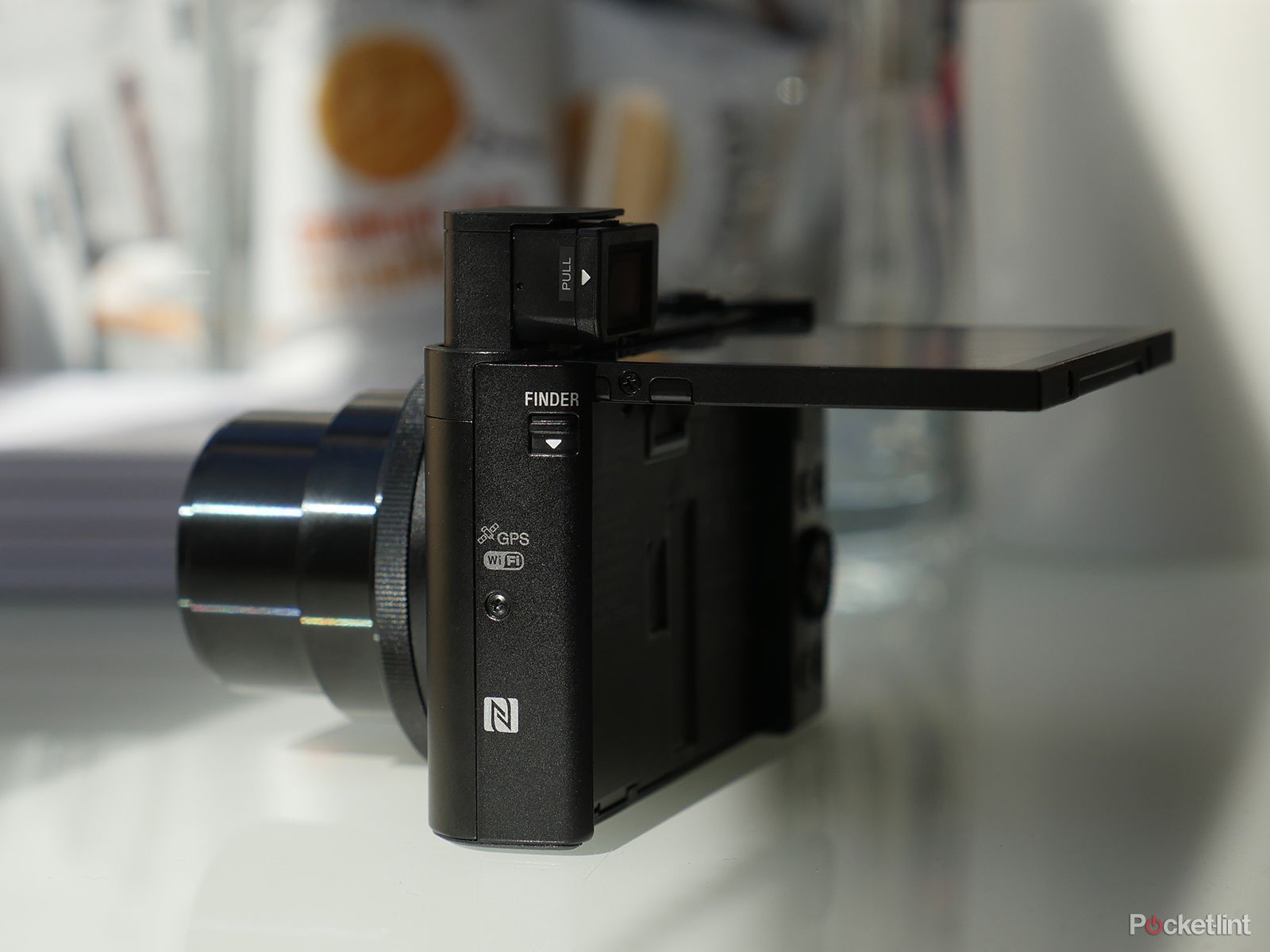Sony is going for gold with its latest travel zoom compact, the Cyber-shot HX90 (and HX90V, which adds GPS), which includes a pop-up electronic viewfinder - a key feature as adopted from its higher-end Cyber-shot RX100 III camera.
But whereas the RX-series is a pricey pro snapper with limited zoom that won't suit all, the HX90 slots into a more versatile and affordable avenue thanks to its 30x optical zoom lens to snap those near and far-away subjects - ideal as a do-it-all holiday camera.
Pocket-lint got to handle a pre-production Sony HX90 following its announcement and it's clear it has one competitor clearly set in its sights: the Panasonic Lumix TZ70. But does Sony have the upper hand over the already well-established Panasonic, and does that set-up the HX90 as the best travel zoom to consider buying in 2015?
Camera nestled into hand, the first thing we notice about the HX90 is just how small it is for a 30x zoom camera. This isn't a rebadged HX60, the 2014 model which it updates, but a whole new design.
The HX90's 58 x 102 x 35mm frame isn't only smaller than the earlier model, we also calculate it to be roughly 16 per cent smaller (by volume) compared to the Panasonic TZ70. Numbers are one thing, but it can really be felt in the hand - and both the Cyber-shot HX60 and (by virtue of an old colleage) Lumix TZ70 were in the room to see the difference.
This smaller scale is all down to engineering. Sony has shaved off the millimetres but not cost the lens any of its capability, maintaining the maximum f.3.5-6.3 aperture which functions fine in good light, but will mean some limits to steady shooting as the light drops. It's adept for close-up situations, in addition to wide-angle and far-away scenes.
Although the official press release states a 25-750mm equivalent zoom, the 4.1-123 written on the front of the camera suggests a 24-720mm equivalent to us, given the sensor size. But that's a small rather than giant difference. Besides, the key thing to take away from the lens is that, if anything, it's actually been improved compared to the HX60 optic despite a 30 per cent reduction in scale. The new design also sports a Vario-Sonnar T* designation, which is like a stamp of approval for sharpness in the world of optics.
Using the lens via the toggle around the shutter button sees it travel through the zoom range with reasonable pace, although it's not lightning fast. The autofocus, however, is quick and capable throughout the range from what we tried out - with surrounding cups and glasses in the room getting snapped into focus with the zoom even fully extended. Don't expect too much from close-up capabilities with the zoom extended though, as there are limits to what's possible.
Where the lens meets the body is a rotational control ring, which is also customisable, but by default is handy for quickly jumping through the relevant settings. If, for example, the top mode dial is set to aperture priority (A) then this is what the control ring will handle, via a digital display on the rear screen, along with some audible clicks so you can see and hear the changes. As the changes are made electronically there's no click or physical feedback from the ring itself though.
The rear screen did struggle in direct sunlight (an apparent side effect of first summer-like day in the UK this year), but the 638k-dot OLED viewfinder came into its own to compensate for this. The rear screen has another trick up its sleeve too: the ability to tilt by 180-degrees to face forward for selfies. It's not much use if the viewfinder's up, of course, and the absence of a touchscreen seems an oddity in this instance. Guess we can't have it all.
Just like with the RX100 III model, the HX90 has a button for popping-up its embedded viewfinder, which then has to be manually pulled out to complete its form and enable a sharp view. It's a bit of a faff having to perform this last manual pull, a criticism often aligned at the RX100 III, but for the sake of a small scale body it's a small price to pay.
Considering it's only a small-scale compact finder it looks pretty decent too. We had no trouble viewing it even with glasses on, but it's not as high resolution as its TZ70 competitor which may be a deciding factor between the two models.
On the image quality front Sony has made an interesting move by cutting the HX90's megapixel count for the first time in a few generations. With an 18.2-megapixel 1/2.3in Exmor R sensor - the "R" means it's back-illuminated, thanks to a different wiring structure that enables more light to get to where it needs to be - rather than the 20.2-megapixel offering of old, that, combined with the Bionz X processor, spells good things for image quality. Well, we presume it does, as in its pre-production state we've only been able to sample how the camera functions, not see its full and final image quality just yet.
In addition the HX90 also offers optical image stabilisation (now 5-axis to counteract movement in all directions) for smoother handheld shots, Wi-Fi and NFC (near field communication for one-touch sync) for sharing pictures and plugging into Sony's PlayMemories camera app, 1080p movie capture in XAVC S or AVCHD formats, and GPS which can be found in the "V" model only.
If you're after a high-zoom, pocketable compact with a viewfinder on board then the HX90 ticks every single box as a versatile travel zoom. It's not only smaller than the Panasonic Lumix TZ70 in size, its price tag is too: at £330 for the HX90 and £340 for the HX90V, you could walk away with an extra note in the back pocket too. The only concession? You won't be able to capture raw files with the Sony. But that's one of the few downsides we could spot in our initial time with the camera.
All in all, from what we've experienced, the SonyHX90 really does set the bar high. It'll certainly give Panasonic something to chew over.

